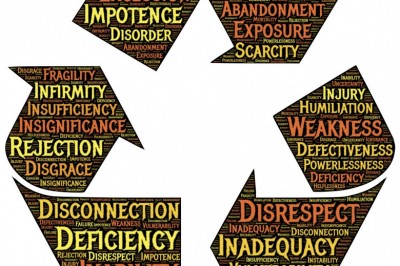
Dealing With Objections
An objection can be looked upon as sales resistance, and without it you cannot expect to make a sale – just as in electricity you cannot expect to have current flowing from one end of conduction to the other without resistance.Making a sale is like driving a car from A to B, where you accelerate and decelerate according to the road conditions.
If the car were lifted, the wheels would not touch the ground, it would not have resistance, and without friction you wont be able to move forward no matter how fast the wheels are spinning.
Objections can arise from the buyer wanting:
• Doubts clarified
• Further information
• Reassurance on certain pointsThey may be:
• Openly expressed
• Implied
• Hidden And if they are hidden it is the salespersons job to smoke them out, for an objection that is not discovered and dealt with is a lost sale.
Objections can be rational or irrational. In face-to-face selling, most objections come from the buyer – but an inexperienced salesperson could provoke some objections himself if he or she is not vigilant.Dealing with ObjectionsEither:
• Pre-empt the objection – kill it off before the buyer thinks of it, or
• Answer it immediatelyIf you tell the buyer you will deal with the objection later, then forget about it, or – worse – ignore it, you will risk the buyer thinking you are either hedging or ignorant of the answers.
In either case the sale could be threatened then or later. Unprofessional or inexperienced salespeople do not know how to recognise an objection and deal with it, and disregard what the buyer has said.
They carry on regardless and hence lose the sale. Salespeople who do a wishy-washy job when selling, by not confronting objections and dealing with them in the right manner will always come out with sob stories to defend their poor selling abilities. Their excuse for losing the sale will be that the buyer gave them a tough time and complained about the product, service or idea. This is not so.
What the buyer is telling the seller is that, based on their perceptions of the product, service or idea being offered and what the seller has told them during the sales presentation is that the buyer could not make a decision.Objection handling to the seller therefore takes place as a prelude to closing and it is in that context that objections must be viewed rather than suspecting the buyer of throwing in a red herring in order to escape giving the seller a decision, or put him or her off course.
When multiple objections are expressed by the buyer, the seller can treat all of them as one and ask, Apart from these objections is there anything else that concerns you? if not, the seller then says, If I could provide you with a solution or a valid explanation to those objections you would be prepared to go ahead, wouldnt you? The answer to this must naturally be Yes so you deal with them by isolating each objection, writing them down on a piece of paper in the presence of the buyer, answering them to the point, getting agreement with the buyer that each one has been answered to their satisfaction and crossing them out as you proceed, until the sale is made.
This technique is called the final objection closing technique.It is very easy for a seller to confuse an Excuse with a genuine Objection. An excuse is where a buyer is deliberately trying to avoid making a decision. An objection is a concrete opportunity for you to find a way of dealing with whatever is troubling the buyer, and close the sale.
When the buyer starts to make excuses you start to manipulate them subtly, letting him or her know that you have gauged their game and are aware that they are prevaricating. Be careful, though – you risk making the buyer angry if you use intimidating behaviour and you might reach the stage where you have to withdraw from the meeting. You then allow a cooling-off period, and may then contact the buyer again, apologizing for your supposed mistake. This should pave the way for a fresh selling start.
Objections can be based on the following factors:
• You, your company, product, service or idea
• Rumour or hearsay
• Cost (the amount of money required to run something) or price (the amount of money you would have to pay to own it)
• Quality
• Reliability
• Durability
• Packaging
• Competitive advantages or disadvantages
• Size
• Shape
• Colour
• Function ability
• Weight
• Chemical composition
• Suitability
• Reputation
• Past performance
• Lack of desire to change
• Seasonal demand
• Fear, guilt, jealousy, anger
• Future growth potential (continued)
• Product, service or idea does not satisfy need
• Unwillingness to take risks
• Lack of urgency
• Cultural differencesThe professional salesperson should meet these objections head on, and defuse them just like a bomb disposal officer would neutralize a bomb, rendering it harmless.
Now you can have Jonathans free newsletter delivered to your inbox every quarterwww.jonathanfarrington.com/Newsletter.php
The moral right of the author, Jonathan Farrington, has been asserted.All rights reserved.
This publication or any part thereof may not be reproduced or transmitted in any form or by any means electronic or mechanical including photocopying, recording, storage in an information retrieval system or otherwise, unless this notification of copyright is retained.























